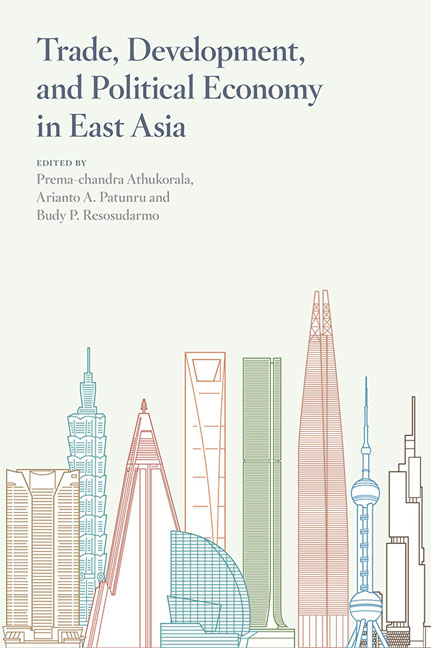Book contents
- Frontmatter
- Contents
- Tables
- Figures
- Contributors
- Foreword
- Acknowledgments
- Glossary
- 1 Introduction
- PART 1 TRADE
- 2 Challenges of the world trading system and implications for Indonesia
- 3 From spaghetti bowl to jigsaw puzzle? Addressing the disarray in the world trade system
- 4 Agricultural trade consequences of Asia's economic growth: a case study of wine
- PART 2 DEVELOPMENT
- PART 3 POLITICAL ECONOMY
- References
- Index
4 - Agricultural trade consequences of Asia's economic growth: a case study of wine
from PART 1 - TRADE
Published online by Cambridge University Press: 19 May 2017
- Frontmatter
- Contents
- Tables
- Figures
- Contributors
- Foreword
- Acknowledgments
- Glossary
- 1 Introduction
- PART 1 TRADE
- 2 Challenges of the world trading system and implications for Indonesia
- 3 From spaghetti bowl to jigsaw puzzle? Addressing the disarray in the world trade system
- 4 Agricultural trade consequences of Asia's economic growth: a case study of wine
- PART 2 DEVELOPMENT
- PART 3 POLITICAL ECONOMY
- References
- Index
Summary
Hal Hill has been an avid student of Asian economic growth and trade throughout his career. While that has not led him to do research specifically on trade in farm products, his fondness for conversing over shared meals with good food and wine is well known. Hence the agricultural focus of this chapter, with a particular application to Asia's trade in wine.
Rice wine is common in Asia of course, but wine made from grapes has had a very minor role traditionally. Prior to this century, grape wine was consumed only by Asia's elite and produced only in tiny quantities mostly in just Japan and, from the late 1980s, China. However, income growth and a preference swing towards this traditional European product have changed the consumption situation dramatically. China is also expanding its area of vineyards and is now the world's fifth largest producer of grape wine (hereafter called just wine), up from fifteenth as recently as 2001. That supply expansion has not been able to keep up with China's growth in demand, so wine imports have surged. Nor are those imports only of low quality. The average current US$ price of wine imports grew at 7 percent per year between 2000 and 2009 in Asia, compared with only 5.5 percent in the rest of the world. By 2009 that Asian average import price was nearly 80 percent higher than the world average, and more than four times higher in the case of Hong Kong and Singapore. Even the unit values of China's imports of both bottled still wines and sparkling wines were above the global average by 2009 (Anderson and Nelgen 2011). Meanwhile, after removing its tariff on wine imports in February 2008, Hong Kong has become the world's most important market for ultra-premium and iconic wines.
What is the future of Asia in the world's wine markets? Will China's wine production eventually exceed its consumption domestically? How important will wine demand be in the four next-most-populous Asian countries (India, Indonesia, Pakistan, and Bangladesh)? Who else will satisfy Asia's growing thirst? How will the various wine quality categories develop in Asia? Which wine varieties will Asians prefer? What roles will excise and import taxes play? What is the future of the austerity drive China introduced in 2014 that has dampened conspicuous consumption of luxuries such as expensive wines?
- Type
- Chapter
- Information
- Trade, Development, and Political Economy in East AsiaEssays in Honour of Hal Hill, pp. 43 - 64Publisher: ISEAS–Yusof Ishak InstitutePrint publication year: 2014

